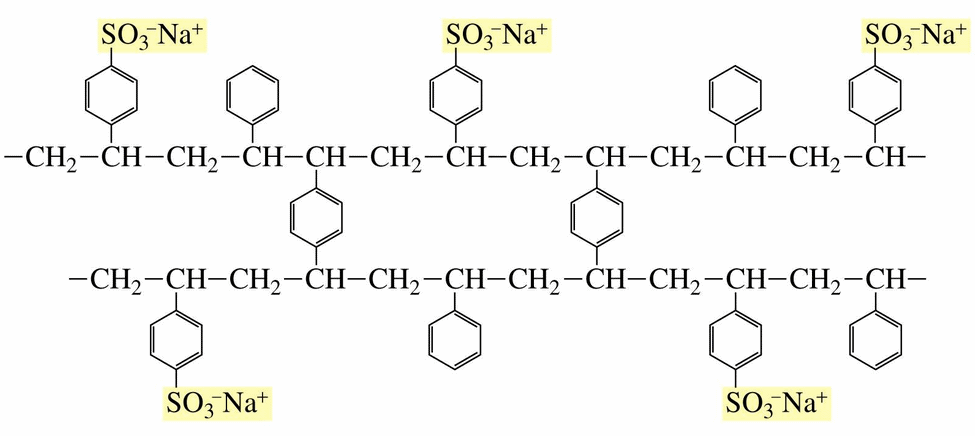







Method
The amino acids can be separated according to their $ pI $ ( → isoelectric point ) on a chromatographic column prepared in such a way that positive ions are fixed there preferentially in exchange for sodium ions:

The mixture 0 to be analyzed is deposited at the top of the column 2. The eluent 1 is often propelled under pressure (HPLC ). Amino acids 3, 4 and 5 descend with a different velocity.
Amino Acids - having values of $ pI $ greater than the $pH$ of the eluent have a positive overall charge: They stick better on the support and descend less quickly. - having values of $ pI $ less than the $pH$ of the eluent have a rather negative overall charge: They do not stick to the support and go down quickly with the eluent.
The column The column is often a sulfonated derivative of polystyrene which readily abandons its $Na^+$ ions while attracting strongly positively charged amino acids:

Improvement The eluent is often pressurized (HPLC method). On the other hand, one can gradually change its $ pH $ in such a way that a different part of the amino acids is concerned each time, the other remaining at the beginning of the column. The detection is done by measuring the absorbance by an appropriate wavelength:
